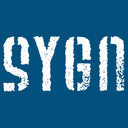Speaker
Prof.
Tamás Szőnyi
(Eötvös Loránd University, Budapest, Hungary and MTA-ELTE Geometric and Algebraic Combinatorics Research Group)
Description
The chromatic number of a hypergraph is the smallest number of colours needed to colour the points so that no edge is monochromatic. Projective planes of order greater than 2 have chromatic number 2, which simply means that projective planes of order greater than 2 have non-trivial blocking sets.
We shall be more interested in the upper chromatic number of projective planes and spaces. The notion comes from Voloshin’s work on colourings of mixed hypergraphs. For a hypergraph, the upper chromatic number denotes the maximum number of colours in a colouring of the points such that each edge has at least two points of the same colour. So, instead of excluding monochromatic edges we exclude “rainbow” ones. Edges of our hypergraph are lines or subspaces of fixed dimension. Few results are known for general planes, mainly due to Bacsó and Tuza. In the talk we focus on determining or bounding the upper chromatic number of planes and spaces over finite fields. The following construction relates the upper chromatic number and the minimum size of a double blocking set. A double blocking set is a set of points that intersects each line (or subspace of given dimension in case of projective spaces). Take a double blocking set and colour all of its points red. The remaining points get pairwise different colours. This trivial colouring gives a lower bound ont he upper chromatic number. In several cases we could prove that we actually have equality in the bound coming from the above trivial colouring and sometimes can even show a stability results for the trivial colouring.
(Joint work with Gábor Bacsó, Tamás Héger)
Author
Prof.
Tamás Szőnyi
(Eötvös Loránd University, Budapest, Hungary and MTA-ELTE Geometric and Algebraic Combinatorics Research Group)

